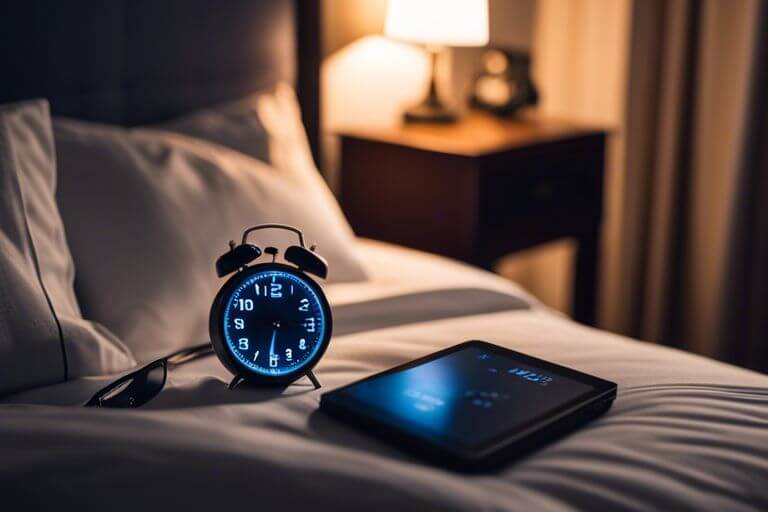From Screens to Sleep – Managing Blue Light Exposure for Better Rest
It’s no secret that blue light from screens can disrupt our sleep patterns. In today’s digital age, exposure to blue light from smartphones, tablets, and laptops is almost unavoidable. This blue light can suppress the production of melatonin, the hormone that regulates our sleep-wake cycle, making it harder to fall asleep and stay asleep. However, there are ways to manage our blue light exposure to improve our quality of rest. By implementing screen time limits, using blue light filters, or wearing blue light-blocking glasses in the evening, we can help our bodies wind down naturally and promote better sleep. Understanding the impact of blue light on our sleep is the first step towards a more restful night’s sleep.
Blue Light and Its Effects on Sleep
Science Behind Blue Light
While we are exposed to various forms of light throughout the day, blue light, in particular, has a significant impact on our sleep-wake cycles. Blue light is a high-energy, short-wavelength light that is emitted by digital devices such as smartphones, tablets, and computers. When we are exposed to blue light, especially in the evening, it suppresses the production of melatonin, a hormone that regulates sleep.
How Blue Light Affects Circadian Rhythms
Sleep is crucial for overall health and well-being, and disruptions in our circadian rhythms can have negative effects on our sleep quality. With the increasing use of electronic devices in the evening, exposure to blue light has been linked to difficulties falling asleep and achieving restful sleep. Blue light exposure can confuse the brain into thinking it is still daytime, making it harder to wind down and fall asleep.
Another important aspect to consider is that prolonged exposure to blue light before bedtime can lead to sleep disturbances and insomnia. Research has shown that individuals who use electronic devices before bedtime tend to have poorer sleep quality and experience daytime fatigue due to disrupted sleep patterns. It is crucial to limit blue light exposure in the evening to improve sleep and overall well-being.
Sources of Blue Light Exposure
Digital Screens
One significant source of blue light exposure in our daily lives comes from digital screens. Devices such as smartphones, tablets, computers, and televisions emit high levels of blue light, which can interfere with our sleep patterns. Exposure to blue light from screens, especially before bedtime, can disrupt the production of the sleep hormone melatonin, making it harder to fall asleep and obtain restful sleep.
Environmental and Artificial Lighting
Any artificial sources of light can also contribute to blue light exposure. Indoor lighting such as LED and fluorescent lights emit blue light wavelengths, as well as outdoor sources like street lights and car headlights. Exposure to blue light from these sources in the evening can lead to similar sleep disturbances as those caused by digital screens.
Environmental and artificial lighting has become an integral part of modern life, but it is important to be mindful of the impact of blue light exposure on our sleep quality. Making small changes such as using dim red lights in the evening or investing in blue light blocking glasses can help mitigate the negative effects of excessive blue light exposure.
Strategies for Reducing Blue Light Exposure
Behavioral Changes
The key to managing blue light exposure lies in your behaviors. Simple changes like avoiding screens at least an hour before bed, dimming the brightness of your devices, and using blue light filters can significantly impact your sleep quality. By being mindful of your screen time habits, you can create a conducive environment for better rest.
Technological Solutions
Reducing blue light exposure can also be achieved through technological solutions. Many devices now come equipped with built-in night mode settings or downloadable apps that filter out blue light. These tools can automatically adjust the screen color temperature based on the time of day, minimizing the impact of blue light on your circadian rhythm.
Plus, investing in blue light blocking glasses can provide an extra layer of protection. These glasses can significantly reduce the amount of blue light that reaches your eyes, helping to prevent eye strain and improve sleep quality. Incorporating these technological solutions into your daily routine can make a noticeable difference in how you feel and function throughout the day.
Conclusion
Drawing together, the impact of blue light exposure from screens on our sleep patterns is evident. By understanding the effects of blue light and implementing strategies to manage exposure, such as using blue light filters or reducing screen time before bed, we can improve the quality of our rest. Prioritizing healthy sleep habits is important for overall well-being, and being mindful of our screen usage is a significant step towards achieving a better night’s sleep.

